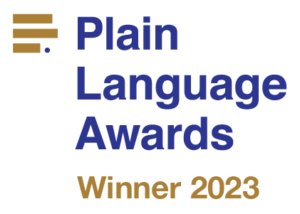Use acronyms thoughtfully
If you work for a government department or NGO, you probably use acronyms in your writing. It can be tempting to use lots of acronyms, as they shorten your sentences and save space on the page. But paragraphs full of acronyms can confuse your readers, slow down their reading and mean your well-crafted messages are lost on your audience.
This article will help you use acronyms in ways that speed up reading without confusing your reader. But before we start, do you know some of the ‘acronyms’ you use are actually initialisms?
Acronyms and initialisms are both types of abbreviations — short forms of words or phrases.
What is an acronym?
An acronym is a pronounceable ‘word’ that contains letters from several words; it often contains the first letters of a string of words. For example, the New Zealand Ministry of Business, Innovation and Employment is commonly referred to as MBIE, which is pronounced em-bee. Other well-known acronyms are AIDS (pronounced aydz) and UNICEF (pronounced yoohnuhsef).
What is an initialism?
Like an acronym, an initialism contains letters from a name or phrase, but an initialism doesn’t form a pronounceable ‘word’. Instead, each individual letter of the initialism is pronounced. For example, the New Zealand Ministry of Health is commonly referred to as ‘the MoH’, which is pronounced em-oh-aych. Other familiar initialisms are BMI (body mass index) and BBC (British Broadcasting Corporation).
In practice, most people refer to both acronyms and initialisms as ‘acronyms’.
When should I use acronyms in my writing?
The main principle is to use acronyms in ways that help rather than hinder your readers. The golden rule is, ‘If in doubt, spell it out.’ Here are some other tips to help you decide when to use acronyms:
- Use an acronym if the phrase it stands for appears frequently in the document. If it appears only once or twice, use the full phrase each time.
- Use the full phrase the first time, followed by the acronym in brackets. For example, ‘The World Health Organization (WHO) began in 1948.’
- Consider substituting an acronym with a short form of the phrase, if readers will understand it. For example, replace ‘the WHO’ with ‘the organization’.
- Only use an acronym without the phrase it stands for if your readers will be familiar with it. For example, ‘The UK and the US are both members of NATO.’
- Use acronyms freely in tables and diagrams, where space is limited.
- Avoid using acronyms in titles, headings and sub-headings.
- Include an abbreviation list, if your document contains many acronyms that are used multiple times.
How should I write acronyms?
If your organisation has a style guide, refer to its section on abbreviations to check its preferred style for acronyms. Otherwise, make your own style choices and use them consistently. Here are some tips to help you:
- Only use ‘the’ before the acronym of an organisation’s name when the organisation itself uses ‘the’ (check its website) or when you would say ‘the’ if saying the sentence aloud. For example, ‘WWF is a leading conservation organisation’ but ‘The WWF’s head office is in Washington.’
- Use ‘a’ or ‘an’ before an acronym when you would say it if saying the sentence aloud. For example, ‘A TVNZ journalist was the first to report the story.’ Use ‘an’ before acronyms that start with a vowel sound; otherwise use ‘a’.
- Don’t use full stops with acronyms. For example, ‘UNICEF’, not ‘U.N.I.C.E.F.’.
- Consult a dictionary, specialist publication or your style guide if you’re unsure how to write an acronym. Increasingly acronyms are written in lower case rather than capitals. For example, ‘Anzac Day’ is now more common than ‘ANZAC Day’.
- Use a lowercase ‘s’ with no apostrophe to make an acronym or initialism plural. For example, ‘He had several ECGs while he was in hospital.’
Capire is a leading New Zealand writing consultancy for governments, NGOs and international development agencies. We help organisations transform their complexity into plain English. Find out more about how we can help your organisation or sign up for our newsletter to get more tips to improve your writing.























